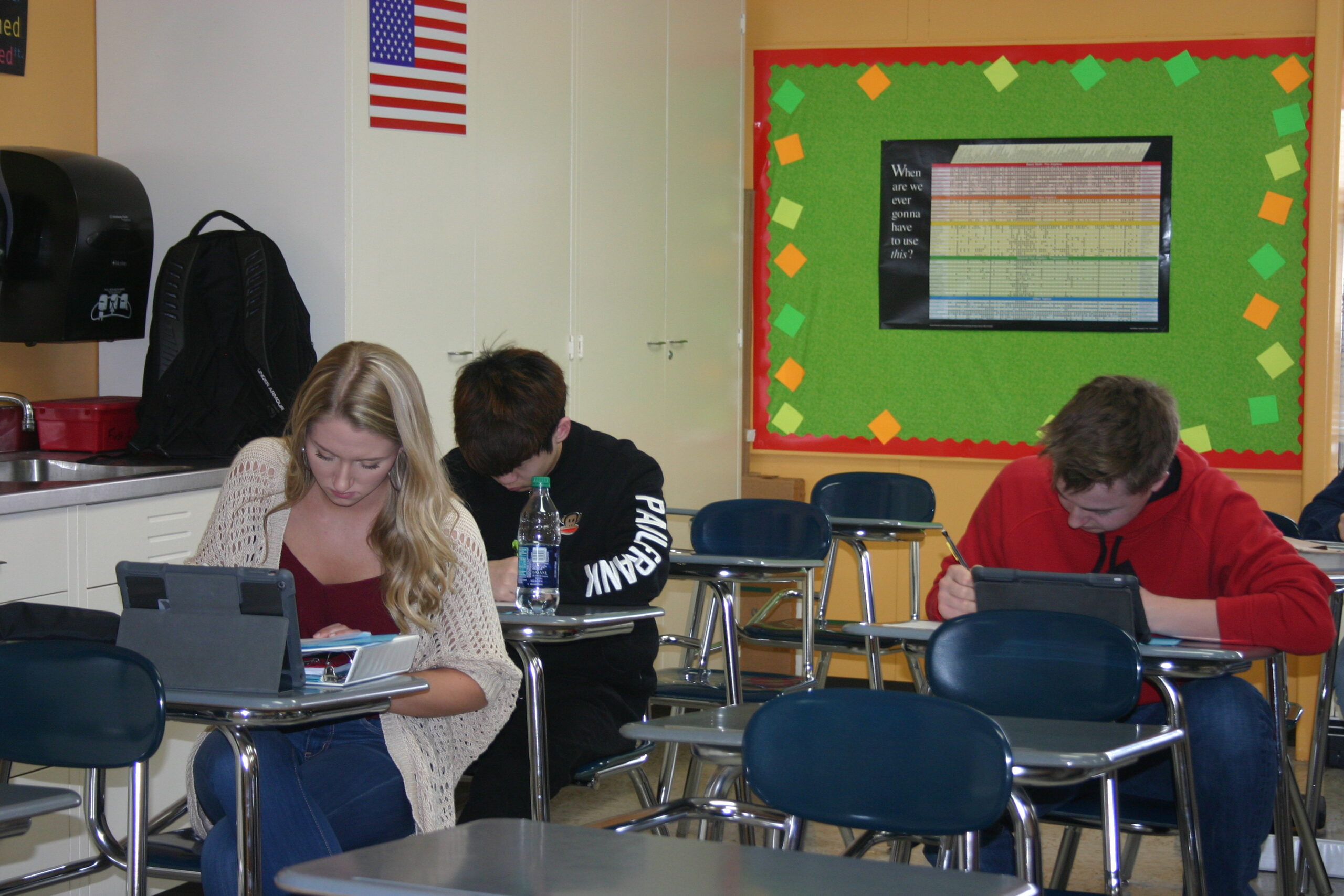
PRESQUE ISLE, Maine — Since giving all 540 students iPads to use in classrooms, many teachers at Presque Isle High School have embraced the technology as a learning tool while finding creative ways to maintain student engagement and productivity.
“There are a lot of apps on their iPads that they use to practice their math skills. When they take quizzes, the apps can give them feedback on what answers they got incorrect and how they can do the problems correctly,” said Jennifer Barnes, math teacher at Presque Isle High School. “IXL is an app they use that has all levels of math problems from pre-K to calculus.
Barnes added that the majority of her students use an app called Notability to take notes on their iPad and copy and paste those notes onto a document in Google Drive, a cloud-based service that allows users to access documents on any device.
Gabbie Beaulieu, a junior in Barnes’ honors algebra course, said that she often uses her iPad to look up videos related to class assignments and for research projects.
“It helps me interact with my teachers more because I can copy what they’re doing instead of just watching,” Beaulieu said.

Students Trace Cyr (front row), Austin Robichaud (second row left), Andrew Hewitt, Kyler Caron, and Jake Stevens (back row, left to right) use iPads in Teri St. Pierre’s precalculus class on Thursday, April 26.
(Staff Photo/Melissa Lizotte)
All teachers at Presque Isle High School also have iPads and access to a portal called Google Classroom. The portal’s layout is similar to Facebook and teachers can post additional assignments, notes or messages related to the coursework that students can access anywhere.
Teri St. Pierre, also a math teacher, said that she uses Google Classroom often to post links to educational YouTube videos and online diagrams that correspond with the skills that students learn in class. She stated that the portal has helped her connect with students even when they are not in class.
“The other day I had to stay home with a sick child, so I recorded a video lesson from home and posted the video to Google Classroom. I told them what I expected them to do for assignments that day and that allowed them to still have a productive day without me being there,” St. Pierre said.
Even with the prevalence of technology in students’ lives, both teachers do not use iPads in their classrooms for every class or lesson. Barnes typically has students pull out their devices at least once a week while St. Pierre employs iPads two or three times a week. They try to balance iPad usage with the more traditional textbooks and pencil and paper so that students can find the learning methods that work best for them.
But when students do use their devices in class, all Presque Isle High School teachers can use an app called Apple Classroom that allows them to view activity on all students’ iPads. They also can lock students into certain apps to prevent them from going onto non-educational websites or keep them from watching inappropriate videos during class.
“If I set my iPad at the front of my desk, then my students know that I’m watching what they’re doing and I can lock them out of certain apps if I need to,” Barnes said.
Students at Presque Isle High School first received iPads in August 2015. Principal Ben Greenlaw said that administrators opted for iPads instead of laptops because the lightweight design allows students to carry the devices more easily. Students also can take their iPads home after school and during summer vacations, if they’re parents pay a $25 fee and agree to meet a $100 deductible if the devices become damaged.
Though a handful of parents currently do not allow their children to bring iPads home, Greenlaw said that the majority of parents have embraced the devices as a learning tool and a way to teach their children responsible use of technology before attending college.
“When we first got the iPads, we blocked so many websites that students and teachers couldn’t utilize them as well. YouTube is a good example because the site has educational tools but there’s also plenty of inappropriate videos out there,” Greenlaw said. “Now with apps like Apple Classroom we’ve found more of a balance so that students aren’t just using iPads as another television.”
The only time when iPads are more potentially distracting, Greenlaw noted, is during study hall periods when students have more freedom to choose what they work on.
“If a student doesn’t repeatedly use their iPad to watch Netflix or do things not related to homework, then we might give them the benefit of the doubt. But if they begin to fail classes and we know they’re not being as productive, that’s when the device can become a problem,” Greenlaw said.
The school works to balance students’ use of all electronic devices by only allowing students to use their cell phones before, after and in between classes and during lunch, and blocking all social media sites from their iPads. For many teachers, iPads will continue to benefit their students as long as there is balance between online resources and classroom learning.
“I wouldn’t use the iPads 100 percent of the time, but I certainly wouldn’t go back to not having them at all,” Barnes said.
St. Pierre added, “Students are so connected with technology today that being able to use those resources with them makes me feel more connected with them.”







